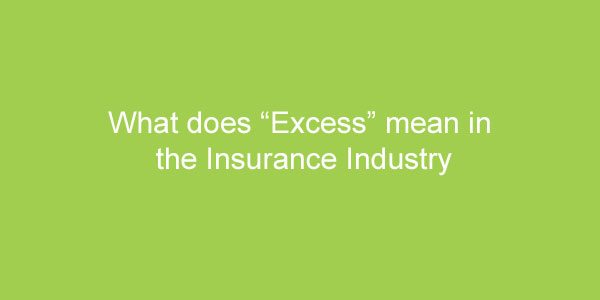Many people assume that once they get a car insurance cover and pay premiums religiously, the will never have to part with any money in case something happens to the vehicle and they have to make a claim.
However, this is not usually the case because you will still have to settle a percentage of the claim while the insurer pays the rest.
What does Excess mean in Insurance Terms?
The amount that you will pay out of your pocket towards the claim is what is referred to as excess in insurance terms. This is one of the downsides to making a claim besides the fact that it can also increase your premiums in future.
The good thing about excess is that your insurer will give you the freedom to choose a level of excess that you can pay comfortably.
However, some people tend to be too optimistic and choose a high excess in the hope that they will never incur the risks that they are insuring against, and hence they will never make a claim.
This tends to significantly lower their premium and make the policy to appear cheap but in reality, this is a very risky move that can make them bankrupt if something goes wrong.
Therefore, it is advisable only to choose a level that is within your means and factor all the possible scenarios.
The insurer will reduce the premium when you choose a higher premium because you will bear more risks than the insurer.
Types of Excess
Basically, there are different types of excess which vary according to the type of policy and different situations.
You can always check your certificate of insurance to see the type of excess that you are liable for.
The main types of excesses that might apply for a comprehensive car insurance policy are standard/basic, age excess, and special or additional excess.
A standard or basic excess is the amount that you will agree to pay in case of a claim. This excess can apply separately or together with another type of excess.
The age excess applies concurrently with the basic excess to drivers below the age of 25 years.
On the other hand, special excess applies during special circumstance or when the vehicle has issues that are supplementary to the basic excess.
Types of excess can also be classified as compulsory and voluntary.
A compulsory excess is non-negotiable and is determined by the type of car you have, your age and the nature of the claim while voluntary excess is the one that you offer to pay.
Situations when you do not have to pay an excess
Fortunately, there are circumstances when you do not have to pay the painful excess fees.
One of them is when you are not to blame for the accident or hazard that is causing you to make a claim, and you can provide details about the person who is liable.
In this scenario, you are exempted from paying because the person who was at fault will pay on your behalf.
The opposite is true in that when there is no one to be blamed, you will have to pay the excess.
For example, if your car was damaged during a natural disaster like an earthquake when it was in the parking lot then you will still have to pay your share of the claim.
Another sure way to avoid paying excess is by reviewing your policy and paying extra coverage.
